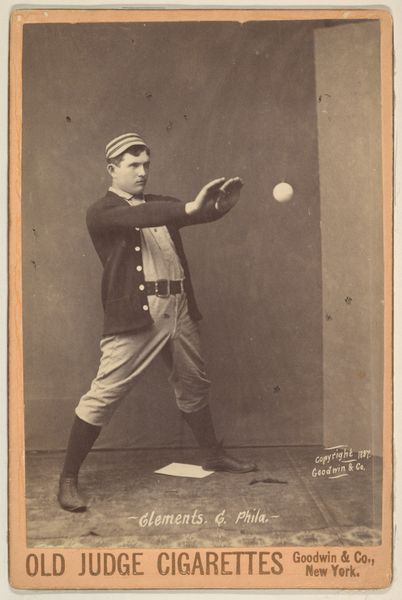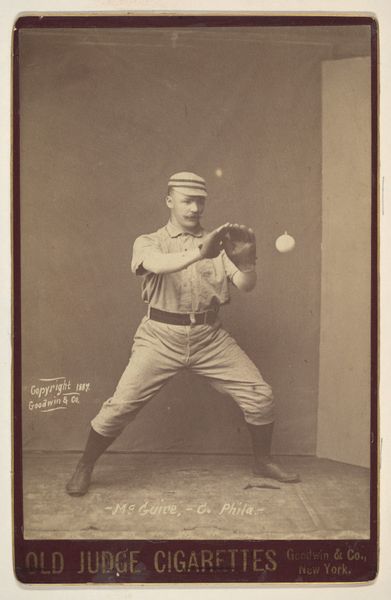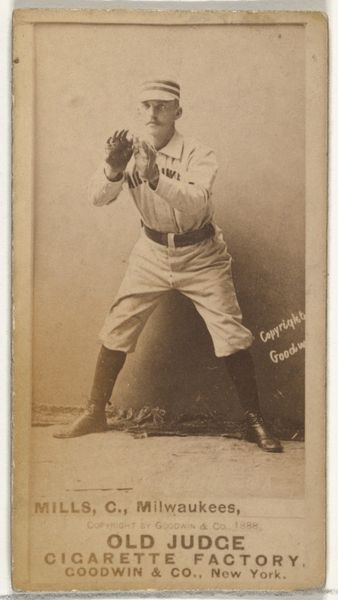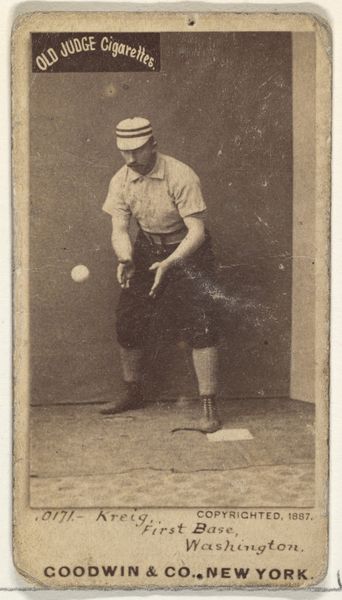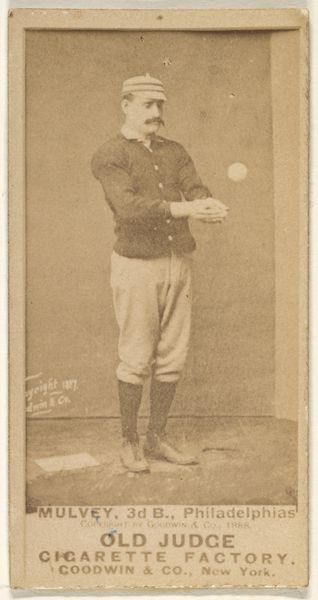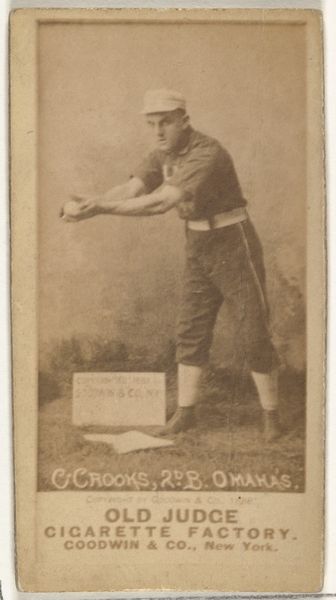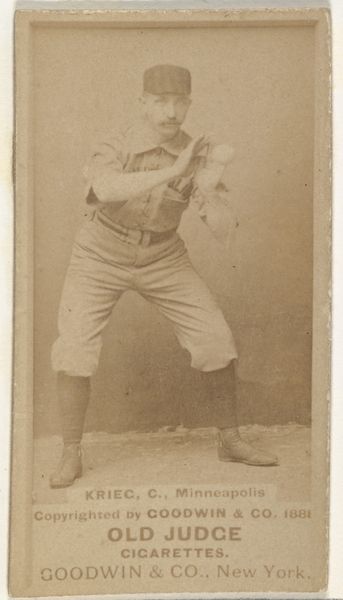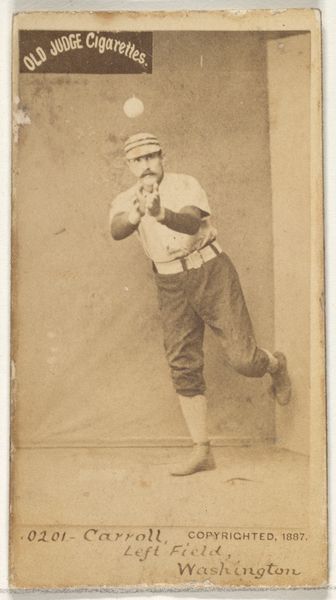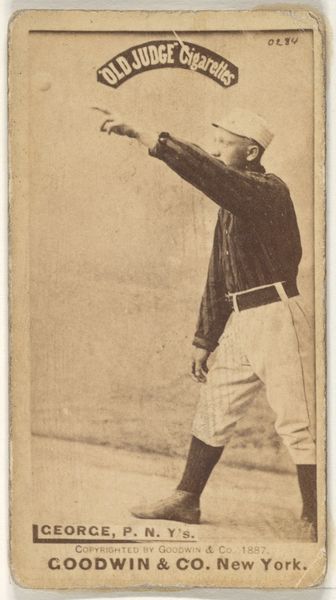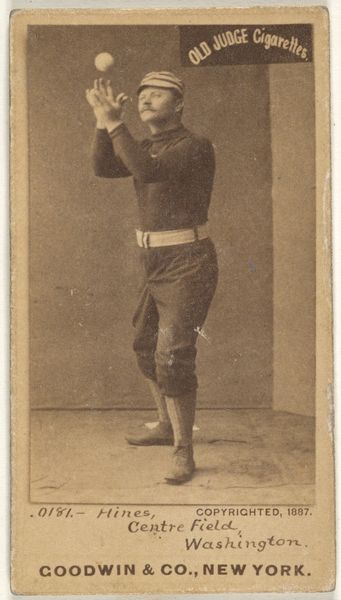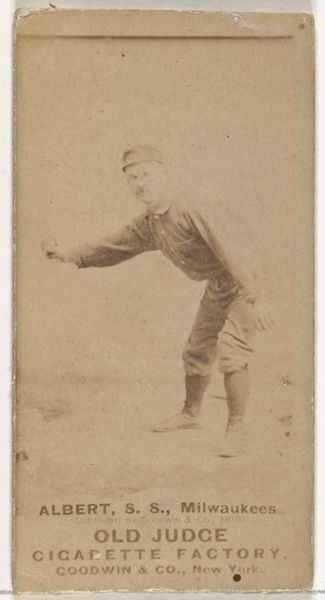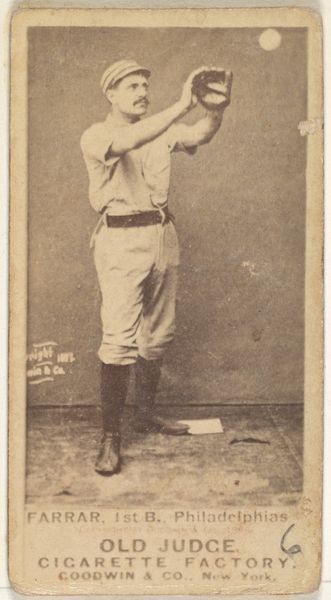
John J. "Jack" Clements, Catcher, Philadelphia, from the Old Judge series (N172) for Old Judge Cigarettes 1887
0:00
0:00
drawing, print
#
portrait
#
pencil drawn
#
photo of handprinted image
#
drawing
#
aged paper
#
toned paper
#
photo restoration
# print
#
old engraving style
#
baseball
#
pencil drawing
#
19th century
#
men
#
watercolour illustration
#
athlete
#
watercolor
Dimensions: sheet: 2 11/16 x 1 3/8 in. (6.9 x 3.5 cm)
Copyright: Public Domain
Editor: So, this is "John J. 'Jack' Clements, Catcher, Philadelphia," from 1887, made by Goodwin & Company for Old Judge Cigarettes. It seems to be a print based on a drawing or photograph. The image has an aged, almost sepia-toned quality. What strikes me is how this small card highlights both the athleticism and the commercialism of the time. What stands out to you? Curator: The card is more than just an image of an athlete. Consider the materiality – a mass-produced print included with cigarettes. This immediately dissolves the boundary between high art and everyday commodity. Think about the production process: a photo or drawing, then reproduced en masse for a decidedly working-class product – cigarettes. Editor: That's fascinating! I hadn't considered the cigarette connection so deeply. How does that change how we see the image? Curator: It invites us to question what is being sold. Is it just cigarettes, or is it also aspiration, fame, even a vision of American masculinity connected to athleticism and success? How are these values shaped through the labor of producing both the image and the cigarette? Consider the target audience. Working-class men buying these cigarettes, seeing Clements – what kind of desires or identifications are being manufactured? Editor: So, the value isn't just in the baseball player, but in the whole system of production and consumption... and how that reflects social values? Curator: Exactly. It's about unpacking the social relations embedded within this seemingly simple piece of commercial ephemera. Who benefits, what’s the cost, and what ideologies are reinforced? Editor: This card reveals a complex web of production, consumption, and social meaning, far beyond a simple baseball portrait. Thanks! Curator: Indeed. Examining the material conditions and context shifts our understanding of value entirely.
Comments
No comments
Be the first to comment and join the conversation on the ultimate creative platform.

